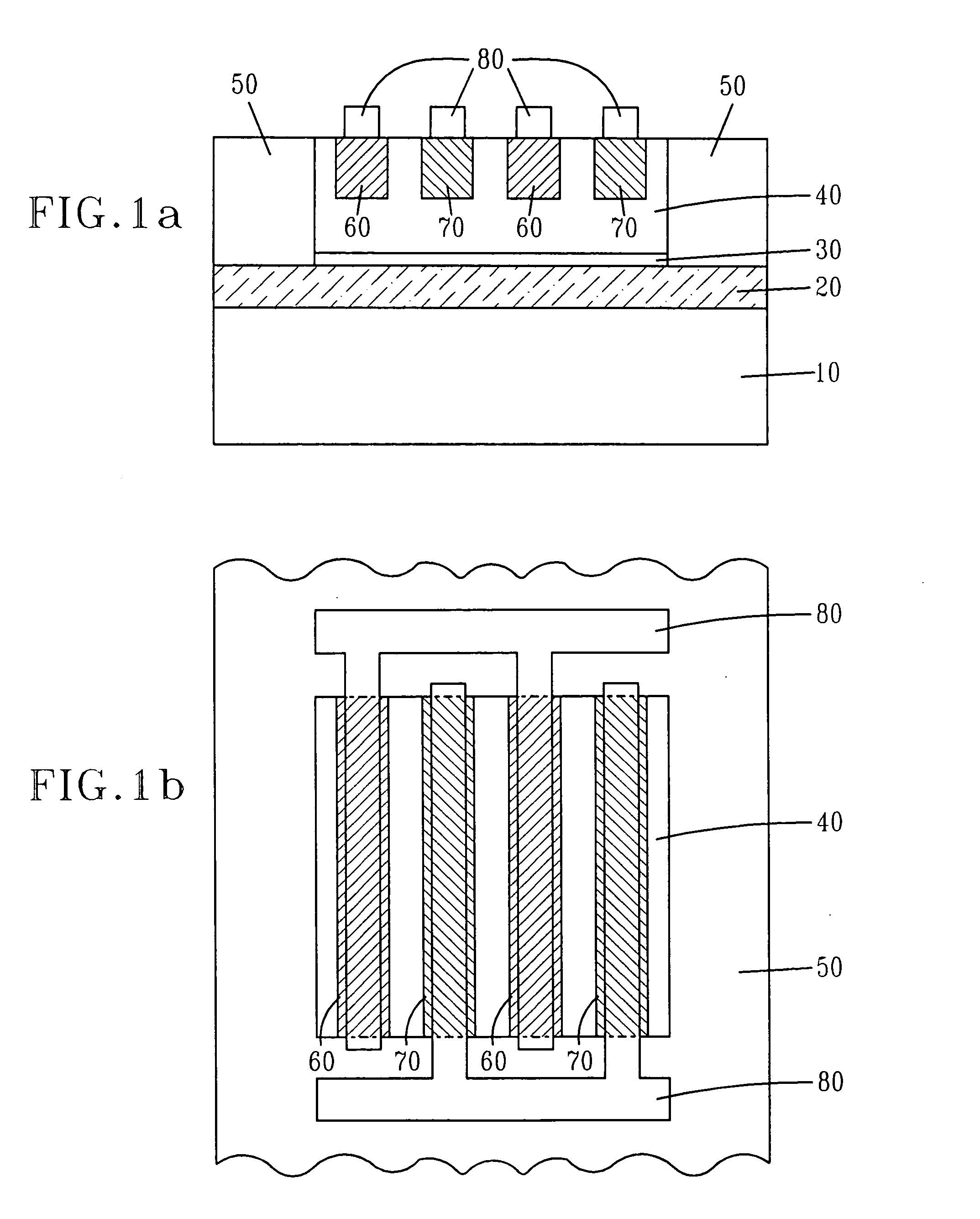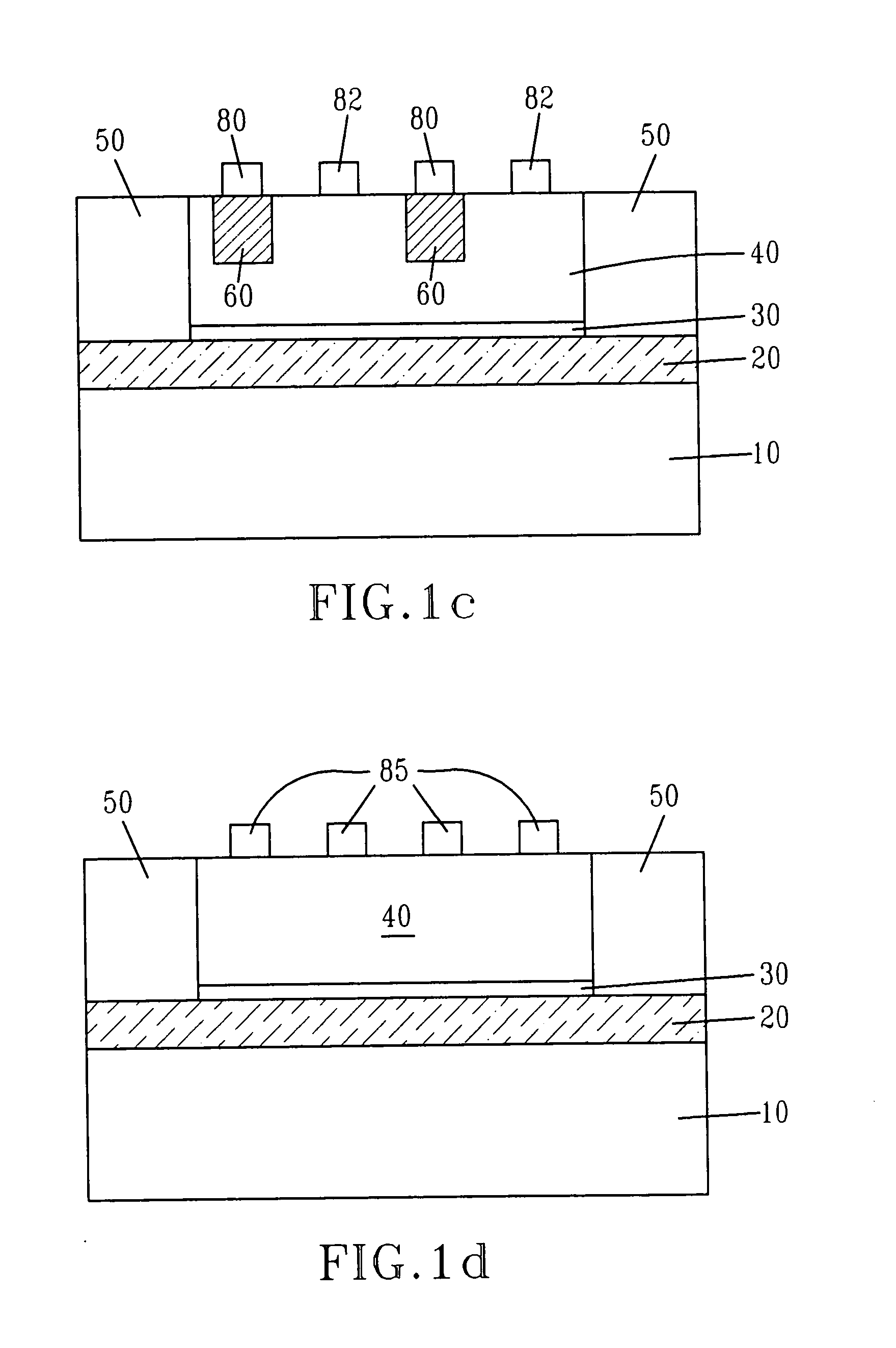Structure for and method of fabricating a high-speed CMOS-compatible Ge-on-insulator photodetector
- Summary
- Abstract
- Description
- Claims
- Application Information
AI Technical Summary
Benefits of technology
Problems solved by technology
Method used
Image
Examples
Embodiment Construction
[0023] Cross-sectional and plan-view diagrams of one embodiment of the present invention are shown in FIGS. 1(a) and 1(b). As shown in FIG. 1(a), the present invention provides a Ge-on-insulator photodetector that is composed of a single-crystal semiconductor substrate 10 (e.g., Si, Ge, SiGe, GaAs, InAs, SiGeC or SiC), an insulating layer 20 (e.g., an oxide, nitride, oxynitride or any combination thereof), and a thin layer of essentially Si (hereinafter Si layer) 30 (e.g., an SOI layer, epi-Si, or amorphous Si). In a preferred embodiment of the present invention, the initial substrate is a Si-on-insulator (SOI) wafer, and therefore layer 10 is Si, and layer 20 is a buried oxide, e.g., SiO2. On top of the thin Si layer 30, is a layer of essentially Ge (hereinafter Ge layer) 40 which, in accordance with the present invention, is much thicker than the Si layer 30. In a preferred embodiment of the present invention, layers 30 and 40 are not-intentionally doped, and should have as low a ...
PUM
 Login to View More
Login to View More Abstract
Description
Claims
Application Information
 Login to View More
Login to View More - R&D
- Intellectual Property
- Life Sciences
- Materials
- Tech Scout
- Unparalleled Data Quality
- Higher Quality Content
- 60% Fewer Hallucinations
Browse by: Latest US Patents, China's latest patents, Technical Efficacy Thesaurus, Application Domain, Technology Topic, Popular Technical Reports.
© 2025 PatSnap. All rights reserved.Legal|Privacy policy|Modern Slavery Act Transparency Statement|Sitemap|About US| Contact US: help@patsnap.com



